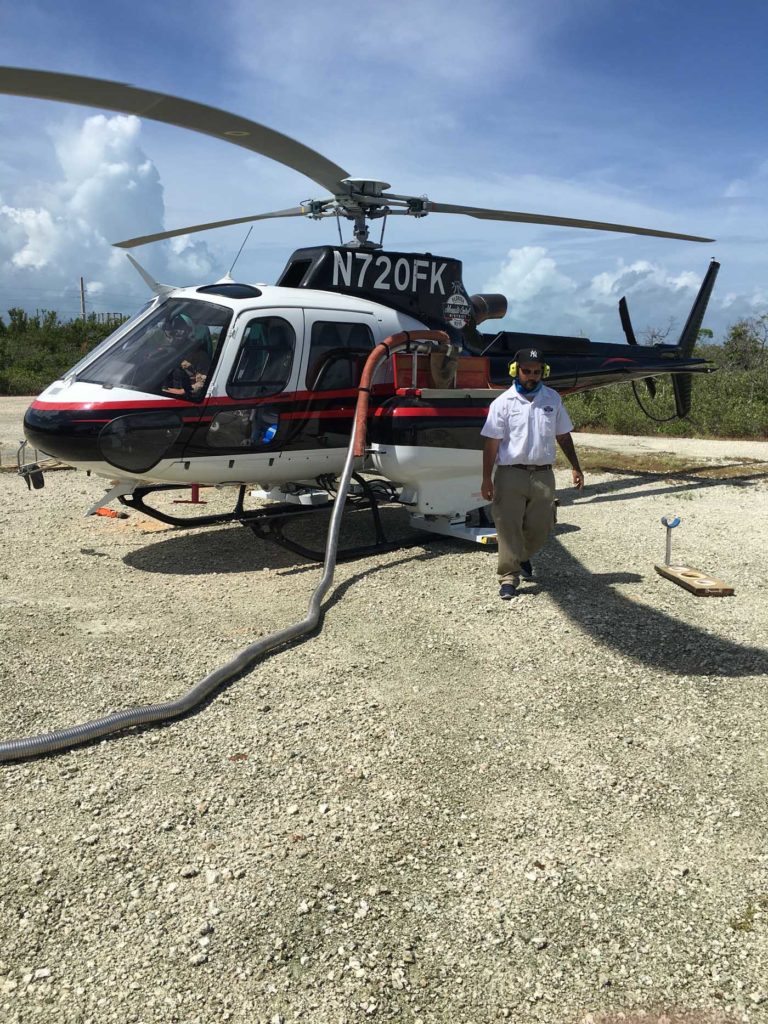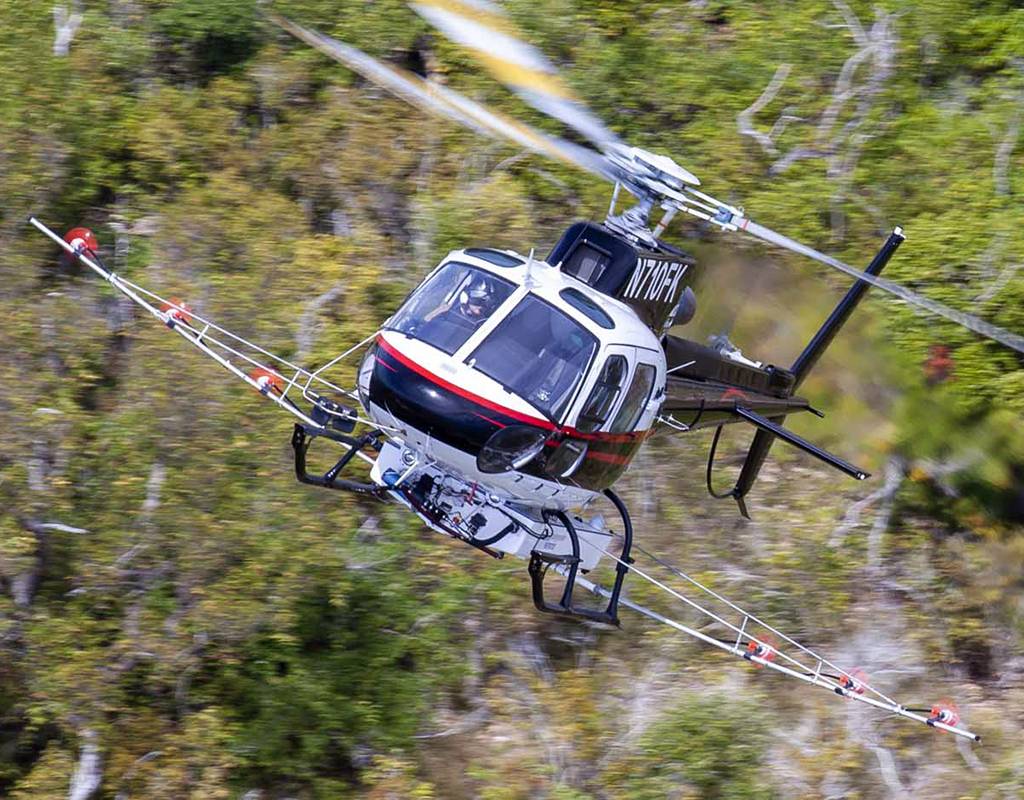
Without the work of the Florida Keys Mosquito Control District, the tropical region would be close to unlivable due to mosquitoes. With two new Airbus H125s, the unit is well-placed to continue its vital role of keeping the region healthy and its economy thriving.
Anyone who has ever visited the beautiful Florida Keys, especially spring through fall, remembers the mosquitoes. But what many people probably don’t realize is that without the work of the Florida Keys Mosquito Control District (FKMCD), the nuisance disease-carrying pests would be so overwhelming that most people would never be able to live there, much less visit.
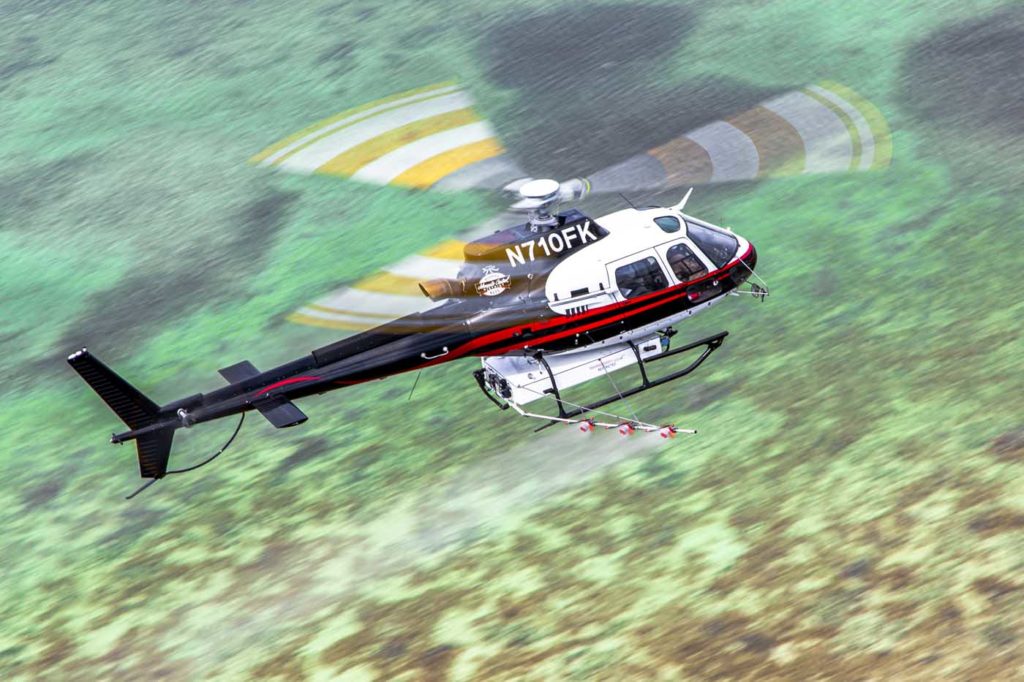
The Keys has over 40 different species of mosquitoes, but only a few create enough of a problem to require the FKMCD’s intervention. And while the bug’s small size might make you think they would be easy to eradicate, quite the opposite is true. With their ability to breed and thrive across the hot, humid (often rainy) tropical climate of the Florida Keys, their sheer number makes them a formidable opponent.
The fastest and most efficient means of attacking them is from the air with a fleet of helicopters modified for the task, and this is a responsibility that is largely born by the FKMCD’s aviation unit. Centrally based at the Florida Keys Marathon International Airport, the unit recently took delivery of some new Airbus H125s to aid its fight against the mosquito menace.

“One of the biggest challenges we have is really getting to the treatment areas throughout the day . . . given the geographic distances between some of the areas,” Joshua Kogut, director of aerial operations for the FKMCD, told Vertical. The Keys stretch some 125 miles (200 kilometers) from Florida’s southern mainland to the tip of Key West, so many of the unit’s flights can take 30 to 45 minutes each way. And time is critical — following a rainfall, they might have just a few days to stop a problem before it starts.
Four species in particular make for the bulk of the mosquito nuisance in the Keys, with the black salt marsh mosquito accounting for 90 percent of the problem on its own. Not only are they annoying and pack irritating bites, they can carry diseases such as dengue fever, encephalitis, malaria, dog heartworm and the West Nile and Zika viruses, to name just a few. This is why it’s imperative to public health in South Florida to keep the mosquito populations under control.
An evolving fleet
To get the job done, the FKMCD currently operates six helicopters and two fixed-wing aircraft (Britten-Norman BN-2 Islanders). While Marathon is where the aircraft are based, the FKMCD has six operating and loading zones from which to stage its attacks on the mosquitoes, from Key Largo in the north, all the way to Key West in the south.
The two new AStars joined a rotary-wing fleet that also included two Bell 206 JetRangers, and two Bell 206L-4 LongRangers, which the unit has used for some time now. The new helicopters are more versatile and come with advanced safety features and low maintenance costs, which is a big plus as FKMCD does all its maintenance in-house.
“One of the main reasons we went with the new helicopters is simply due to their size and efficiency,” said Kogut. “If you think about payloads, what we normally put out used to be around 480 pounds [220 kilograms] per helicopter, but the new helicopters can hold up to 2,000 lb. [910 kg] of the current product we distribute by air. So, quite a big difference in just payload and efficiency.”

“Another reason we chose the H125 is because they’re capable of flying three missions with one helicopter,” Kogut added. “We can do what’s called a granular larvicide, distributing a granular product out of the side-hoppers on the helicopters. Or, it can be removed for a liquid-spray system that we put on to do what’s called a liquid larvicide, which is just the same product in a liquid form to distribute over larger areas such as Key West and Key Largo. Or, we can take that off for a third spray system that we use for ultra-low-volume spraying, which targets adult mosquitoes. So, this helicopter can do all three missions we need, and can replace a lot of the equipment we have, so we’re going from a six-aircraft fleet down to four within the next two to three years.”
-

FKMCD’s system tracks who is flying what aircraft, where, and what treatment is needed.
FKMCD’s system tracks who is flying what aircraft, where, and what treatment is needed.
The H125s also represent a leap forward in technology for the fight. Each utilizes an AG-NAV spray system and some of the most advanced GPS navigation and tracking systems in the industry. They also employ active flight following and wireless remote data transfer, allowing proposed treatment areas (PTAs) to be sent to the pilots extremely quickly.
“We utilize a 4G system for the cell service down here, given the remote locations we treat,” said Kogut. “We have a hotspot in all the aircraft, which helps us download cell service to the aircraft, which is then sent via WiFi to the aircraft system itself. If someone in the field were to add a real-time treatment area, we can actually take that immediately and send it to the aircraft/pilot, so they would not have to deviate and go back to get another load; they can just keep spraying as they receive new info.”
The vast majority of FKMCD’s aerial work is granular larvaciding, which is basically a granular dry corn cob ground up and treated with a bacteria that kills mosquito larvae in the water — before they have a chance to mature into biting insects. This allows them to be tackled without harming anything else in the environment. The Isolair system carries up to 1,000 lb. [455 kg] per side on the H125s, and the product is dispensed via a blower system at the bottom of each side hopper.
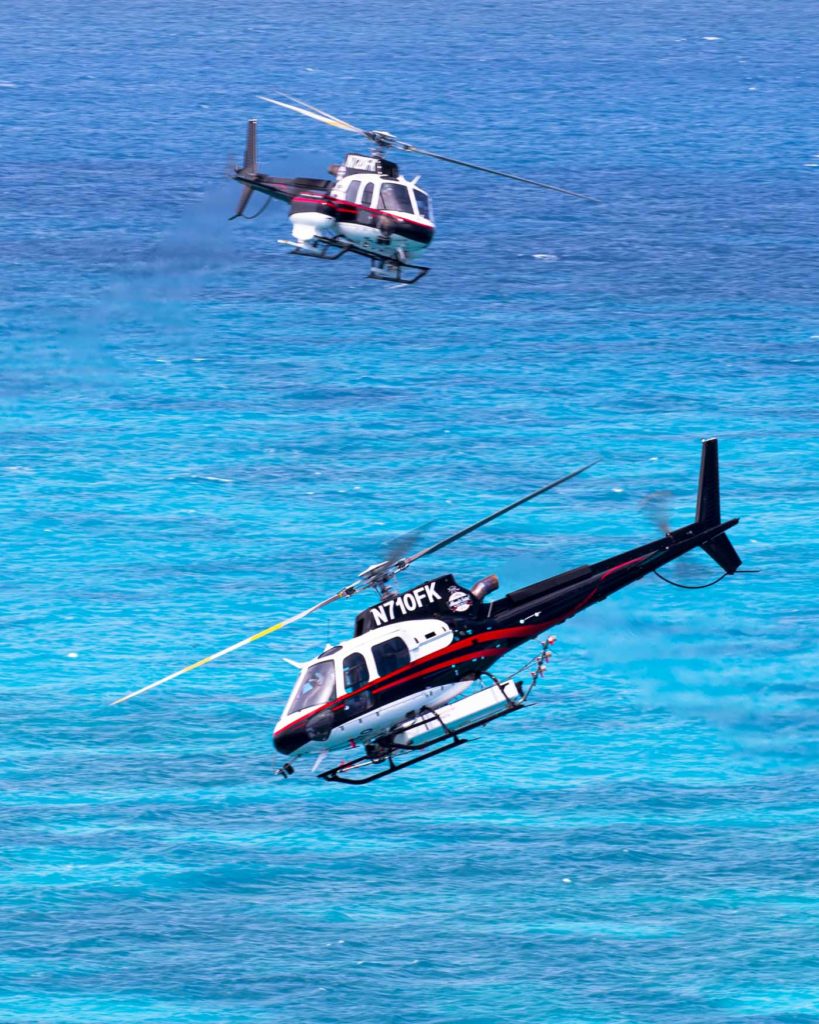
“We can do about a 70-foot [20-meter] swathe with each helicopter, so when we go out the pilots are simply flying back and forth over the treatment areas using this product,” said Kogut. “Once done, they go back to the landing zone and load up with more fuel and product.”
On a busy day, the pilots can be out as long as five or six hours, and can treat anywhere up to 1,200 acres with one helicopter. FKMCD covers about 85,000 acres in a season, but that is heavily dependent on how much rain there is. To kill the mosquitoes before they can mature, the FKMCD only has a window of about three days from the point of rainfall to do it.
“If we get a blanket rainfall across the Keys it can become extremely challenging to get all the acres treated,” said Kogut. “But the men and women here work hard enough where we get it done every time. We do not have many mission failures down here, they work very hard and get it done and it’s something they take great pride in, making sure that the mission gets accomplished every time.”
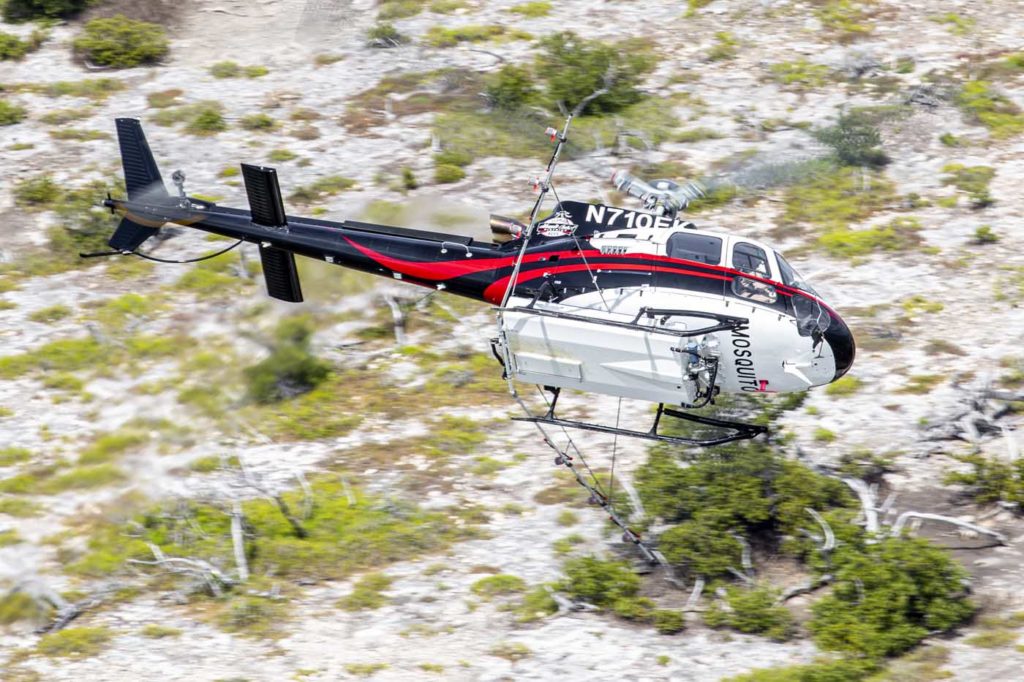
Indeed, while much of the world ground to a halt with the spread of Covid-19 last year, the pandemic didn’t stop the mosquitoes. Key Largo actually had an outbreak of dengue fever for the first time in a decade, which required immediate action by the FKMCD to get under control, with liquid larvicide used to curb that outbreak. After about three months, the case numbers started coming down dramatically, and there have been no reports of the disease in Key Largo since then.

“We were up there at least two to three times a week doing liquid spray systems in the mornings, and throughout the day also doing granular larvicide operations,” said Kogut. “The FKMCD did an amazing job at stopping that outbreak.”
Tools of the trade
One of the unique tools used by the FKMCD is what it calls an “auto-loader.” Designed and built in-house, it allows the FKMCD to quickly and efficiently load product and refuel the helicopters in the field. The auto-loader sits on a flatbed truck for easy transport into the field, and can hold 6,000 lb. (2,720 kg) of granular product. This is then loaded via a modified blower system into the helicopters via a 40-foot (12-meter) hose.
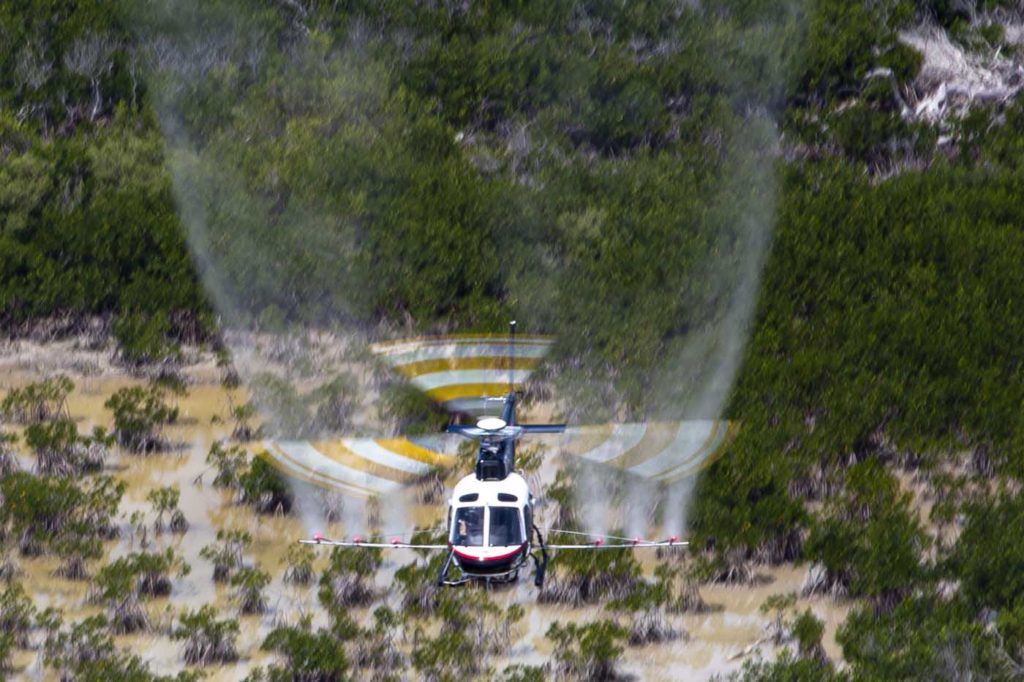
“The helicopter actually comes in and will land in front of this machine, and as the helicopter maintains its engine and keeps running, we will actually load both granular product and fuel so they can get back out treating ASAP,” said Kogut. “We’re able to get the helicopter in and out of the landing zone in about eight to nine minutes. Prior to having this, we literally had to hand-load the helicopters with 40-lb. [18-kg] bags of product, which at this point, considering the size of the H125, is about 38 bags per helicopter per load. So this saves FKMCD an incredible amount of time and energy. We used to have six to eight people in the landing zone to load; now we’re down to just needing two people and it’s extremely efficient.”
The granular product is considered environmentally friendly, as the bacteria infused in it only targets the kind of mosquito they want to kill. Once the larvae eat it, their fate is sealed, with no impact on fish, other insects, or people. For that reason, it is the FKMCD’s preferred method of treating. The mosquitoes become much more difficult to control once they mature, currently requiring pesticides that are not as environmentally friendly.
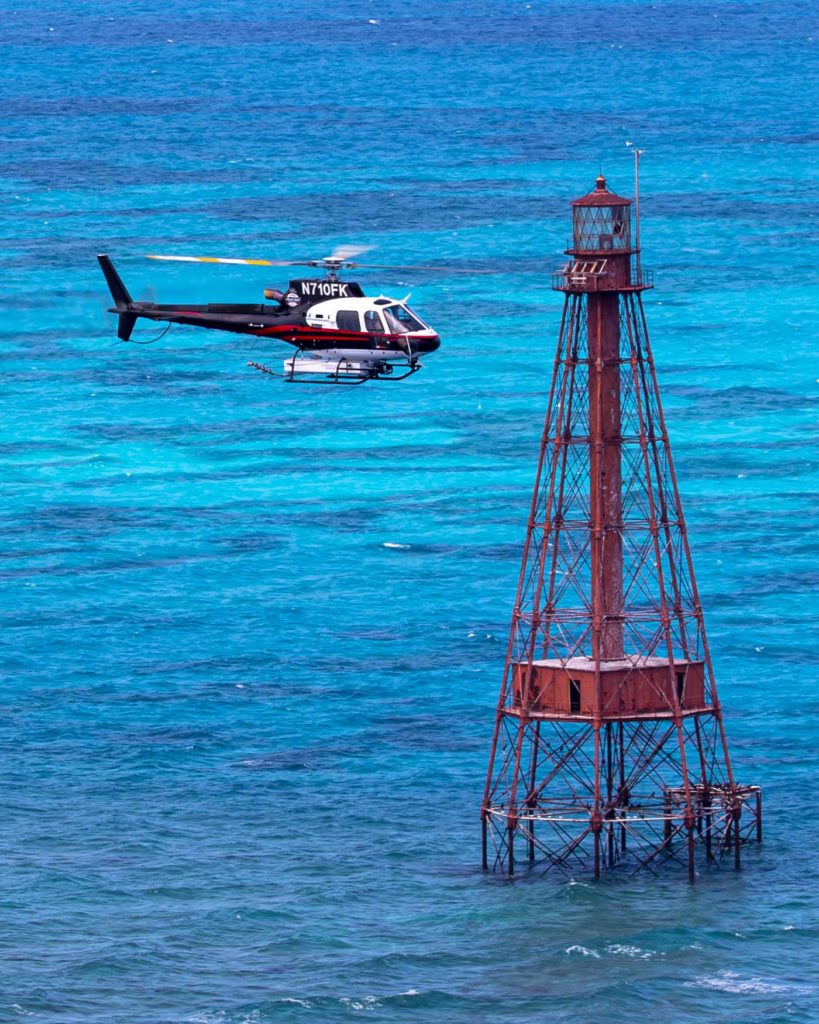
To determine which areas to target, a team of ground inspectors will go into the field to find larvae. Once they find a certain amount in a given area, they’ll input that data — including the due date, location, how many acres, and the estimated pound of product needed to treat it — into a computer program called FieldSeeker so that it can be shared, analyzed or updated throughout the FKMCD.
“Typically we spray out about 7.5 lb. [3.4 kg] of product per acre, but on heavy rain days they will ask us to increase that up to 10 lb. [4.5 kg],” said FKMCD pilot Paul Pignataro. “From there, we will pick out the areas we need to spray, depending on the due date and how critical they are. We do try to get them as quick as we can, because the longer we take, the more the larvae will have matured, which then becomes much more difficult to control. We then divide the areas up among the pilots, and from there we go into our digital AirWare system and do a flight briefing, which is an aircraft management system which works off the maintenance and flight ops side.”
The system tracks who is flying what aircraft, the type of treatment, where and when, how many acres, landing/loading areas, locations of power lines and towers, and weather reports. Even flight crew fatigue is recorded, and everything goes into a risk assessment before the aircraft can go.
“[The crews will] be able to see what kind of fuel we need, what kind of load for the product, and then that aircraft will be ready for the pilot to pre-flight and do the mission,” said Pignataro.
It’s an efficient process, and with the new AStars joining the FKMCD fleet, the organization’s ability to tackle the mosquitoes is now greater than ever.
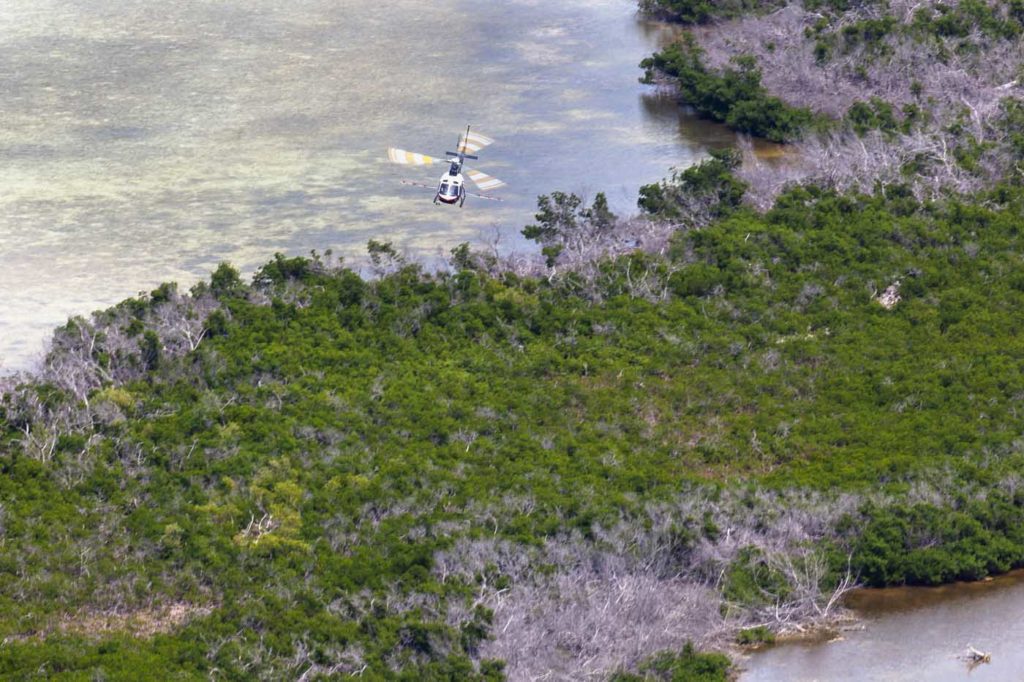
“People here say there are two things you need to live in the Keys: air conditioning and mosquito control,” said Kogut. “And it’s true; if you’ve ever been in an area here that was not being treated, it would be extremely unpleasant. In terms of tourism alone, which is the main income for the Florida Keys, it would hurt tourism and the local economy terribly.”
But thanks to the hard work of the FKMCD, visitors are able to enjoy all the benefits of a tropical climate without having to worry about the bite of the bugs, allowing the Keys to remain an enticing draw to guests from around the world.

